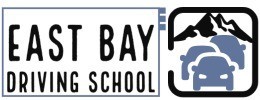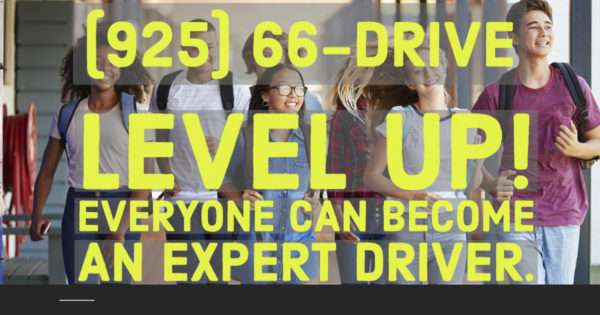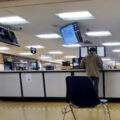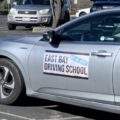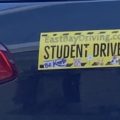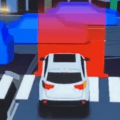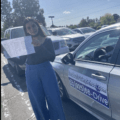1. Sign up for online Driver’s Ed Training or Practice for the Written Exam
For students ages 15-18. Enroll in Driver’s Ed Training
2. Sign up and Learn How To Drive (Behind-The-Wheel)
3. Get extra help with your DMV Driving Test
Available Time Slots
(This is NOT a live calendar. It was last updated at 2:15 PM on Apr 25, 2024. Our calendar is always changing as our students have direct access to schedule/cancel lessons! After enrollment, you will be able to schedule lessons on the Drivescout portal.)Our lessons are taught during daylight. We have lessons between 7 AM and 7:30 PM! Lessons run 7 days of the week!
| Date | Morning | Afternoon |
|---|---|---|
| Date | Morning | Afternoon |
| Thur 4/25 | Full | 5:30-7:30 |
| Fri 4/26 | Full | 12:45-2:45, 5:30-7:30 |
| Sat 4/27 | Full | Full |
| Sun 4/28 | Full | Full |
| Mon 4/29 | Full | 3:30-5:30, 5:30-7:30 |
| Tue 4/30 | 11:30-1:30 | 12:15-2:15, 1-3 |
| Wed 5/1 | Available | 12:15-2:15, 1-3 |
| Thur 5/2 | 10-12 | 12:15-2:15, 1-3, 3-5 |
| Fri 5/3 | 10-12 | 12:15-2:15, 1-3, 3-5, 3:30-5:30 |
| Sat 5/4 | Full | 4-6 |
| Sun 5/5 | Full | 4-6 |
| 5/6 and after | 7-9, 7:30-9:30, 8:30-10:30, 10-12, 10:30-12:30 | 12-2, 1-3, 2:45-4:45, 3:30-5:30, 5:15-7:15, 5:30-7:30, 6-8 |
| Looking for a particular lesson or an appointment for the DMV test? | Please text or call 925.663.7483! | |
Driving Lesson Packages
Our Top Rated Driving School Has a Proven Method For Success
- 110% dedicated to our student’s success.
- 2020-2023 model vehicles. Our vehicles have all of the latest safety features.
- 10+ local high schools serviced (Doughtery Valley, California, Monte Vista, San Ramon Valley, Quarry Lane, Dublin, Amador Valley, Foothill, Livermore, Granada High School).
- 13+ country’s expats, au pair, students (India, Philippines, Indonesia, China, Germany, Thailand, Sri Lanka, Mongolia, Vietnam, Taiwan, Canada, Mexico, and Colombia) have attended our Driving Course and all have succeeded in the DMV test.
- ONE TEAM to help you master driving fundamentals that will last a lifetime!!
Client Testimonials
Our driving coaches have extensive experience with the following students:
1. First-Time Teen or Adult Drivers.
2. H-1B visa holders. Driving in the US, and even in California is unique.
3. Teen or adult drivers looking to tune-up their driving skills
4. We provide mock DMV driving tests to help you familiarize yourself with the example test format.
7
Great Benefits About Our DMV Certified Behind-The-Wheel Training
1. Lessons: Lessons are tailored to each individual’s comfort level. We teach proven and tested driving fundamentals help drivers develop safe driving habits for for a lifetime. Before taking your lessons, we recommend viewing our 10 Tips To Start Driving.
2. Cars: Clean, safe, well-equipped, and certified by reliable mechanics. All our cars are equipped with a second set of pedals and extra mirrors for the instructor.
3. Mock DMV Test: We cover a 36 point CA DMV test rubric that we cater to every driver’s skill set. Lesson plans include multiple 15-minute DMV Drive mock tests to reduce test day anxiety.
4. History: Our driving school is an affiliate of A Deluxe Driving School in the South Bay, helping students since 2004 [Driving School License #E2224].
5. Convenience: You can book online or over the phone. We take appointments 7 days a week.
6. Flexibility: We can meet you at your home, school, BART, DMV, or workplace within our service area.
7. Locations: Our school specializes in the local community in Danville, Alamo, San Ramon, Dublin, Pleasanton, and Livermore.
Why Choose A DMV Certified Driving Instructor With East Bay Driving School?
A message from the Owner:
We are an ODOT-approved driving school with a team of DMV certified driving instructors and professionals. Our school is passionate about the safety and the success of our students.
- Our goal is to teach, mentor, and empower drivers of all ages and all levels.
- We want all of our students to drive safely and defensively, not merely passing the DMV Road Test.
- We hope to make the roads safer through education.
- We provide flexibility and excellent customer service!
- Our driving instructors are kind, patient, personable, and professional.
- Our school vehicles are safely equipped, and dedicated to the safety of our students.
- We are dedicated to providing outstanding driving classes through professional DMV driving instructors.
- We tailor our lessons for each individual who is learning to drive, based on their skillsets and comfort levels.
East Bay Driving School is a wonderful choice for driving classes in California because of our customized attention, compassionate training, and flexible hours!
-Sheri, Owner
